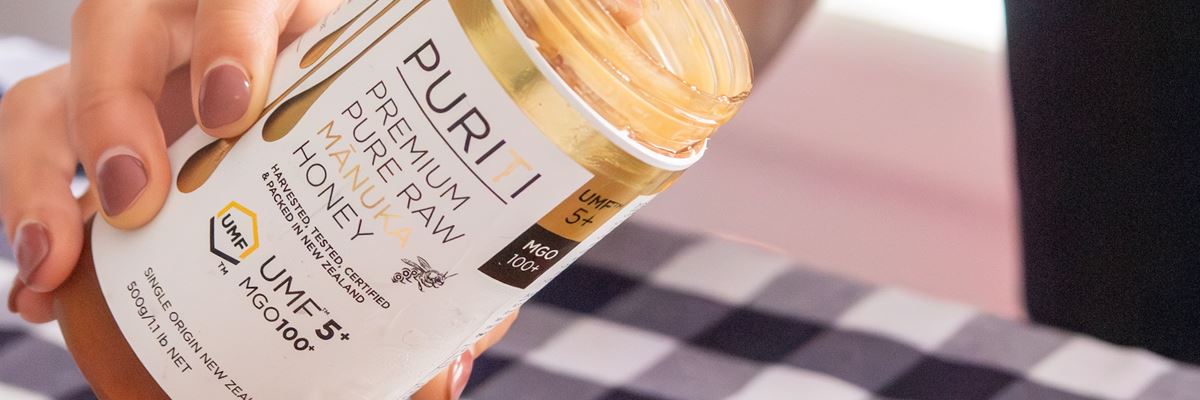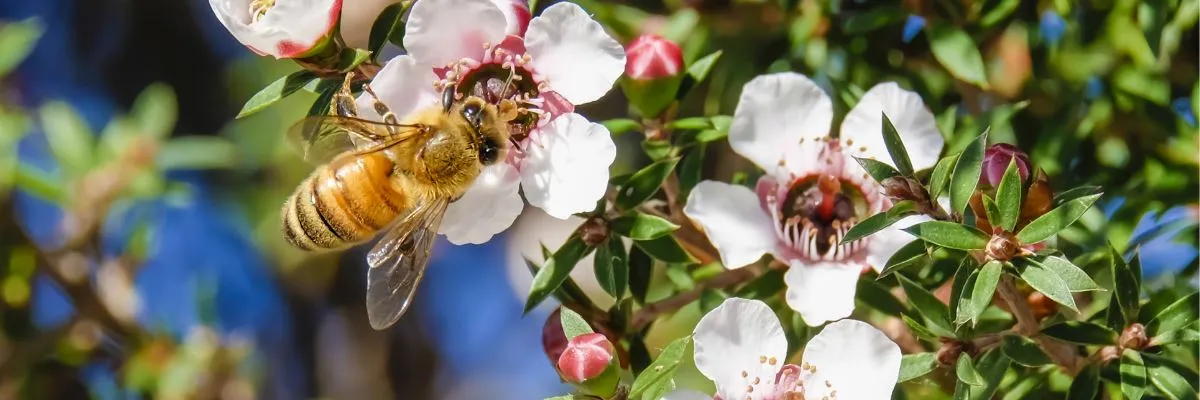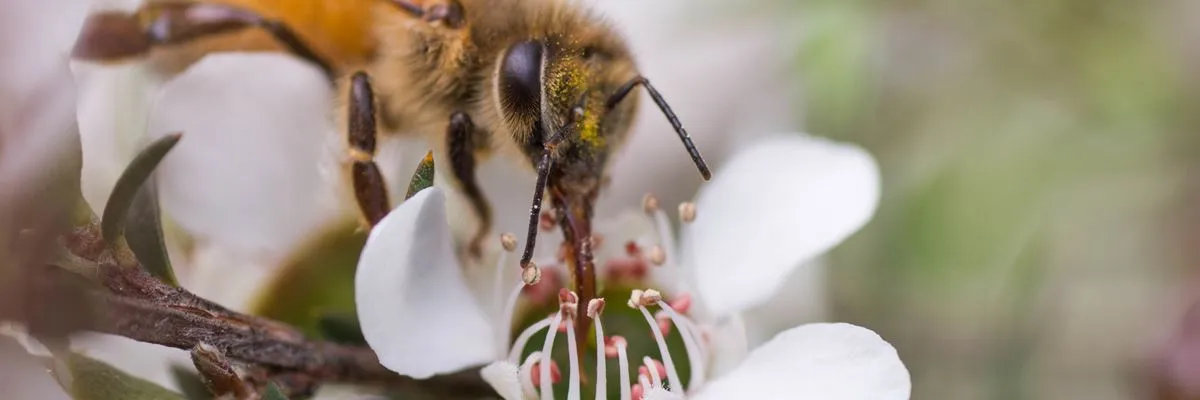Exploring The Scientific Studies Behind Genuine Manuka Honey - Midlands
August 22, 2023

As New Zealand’s largest wholesale Mānuka honey supplier, Midlands Apiaries is no stranger to the science of this unique honey variety. Any business that utilises genuine Mānuka honey will require extensive knowledge and understanding to ensure purity. As a result, we make it an absolute priority to read and study the latest investigations and studies on raw Mānuka honey throughout the world.
With many studies taking place annually, there is no shortage of literature to ensure we have the sharpest understanding of our product. Additionally, we have the capabilities of an in-house laboratory and RnD division to extract unique insights of our own.
The purpose of this article is to give our present and future partners an overview of the scientific studies currently available. When partnering with Midlands Apiaries for your business, it’s important to have a thorough understanding of the science behind the raw Mānuka honey we provide. This article will give you an insightful first step into comprehending the magnificence of this native product that has gained popularity throughout the world.
At the end of this article, make sure to get in touch with us so that we can begin a partnership in providing your customers with 100% pure New Zealand Mānuka honey.
What is Manuka Honey?
Where Does Manuka Honey Come From?
Pure Mānuka honey is derived from the native Mānuka tree found only in New Zealand. The flowers of this treasured plant produce a unique nectar that is “worked” to become the golden Mānuka honey the world has come to love. With plants located throughout New Zealand, it’s well-documented that Mānuka honey thrives in remote locations away from civilisation. Furthermore, the rarity of Mānuka honey is enhanced even further due to the narrow blooming window of approximately six weeks per year.
While the Mānuka flower is native, there have been disagreements within the honey community about whether or not Australia also has Mānuka trees. Mānuka is the Maori term for the species Leptospermum scoparium which is identified by its DNA marker, leptosperin. The same DNA has also been found in the Australian Tea Tree. This key marker is instrumental in verifying pure Mānuka honey as per the scientific definition established by the Ministry of Primary Industries (MPI) from the New Zealand Government.
When monofloral Mānuka honey is harvested, it’s noted for its characteristic caramel-like texture and earthy taste. Many other honey varieties showcase a runny or thin texture that is more transparent. Thanks to its popularity, many people throughout the world can identify this variety by looking alone.
The UMF (Unique Manuka Factor) Rating System:
The UMF™ certification is widely considered to be the gold standard for verifying the authenticity of genuine Mānuka honey and surpasses other validation systems due to its rigorous testing criteria. This rigorous method is the sole quality and rating system that independently guarantees the excellence of all the factors that contribute to the uniqueness of New Zealand Mānuka honey.
What exactly does UMF™ measure? There are four distinct factors that are considered when UMF™ determines the grade of a Mānuka honey sample. These factors are:
- Leptosperin for authenticity
- Methylglyoxal (MGO) for potency
- Dihydroxyacetone (DHA) for shelf-life
- Hydroxymethylfurfural (HMF) for freshness
While many may be satisfied with the methylglyoxal (MGO) content alone, which has been associated with suggested antibacterial properties, it's vital to understand that MGO is just one component among several that contribute to the revered qualities of genuine Mānuka honey. Relying solely on MGO as a measure of authenticity for high-quality Mānuka honey is not quite enough to ensure 100% purity.
The other two unique properties, DHA and HMF, also play a vital role in validating Mānuka honey. For example, DHA is the natural precursor to MGO. Having a substantial concentration of DHA will help confirm that the MGO present is not artificially added. Conversely, HMF is a heat-sensitive chemical that increases in concentration if the honey is heated (or treated). This way, you’ll be able to tell that the honey is unadulterated if HMF levels are low (typically under 40mg/kg).
For more information, please read - “UMF™ Mānuka Honey Grading Explained
Scientific Studies on Manuka Honey
"Identification and quantification of methylglyoxal as the dominant antibacterial constituent of Mānuka (Leptospermum scoparium) honeys from New Zealand" by Thomas A. Henle et al
This 2008 study determining the presence and levels of MGO in pure Mānuka honey has since become an important piece of research in the hunt for understanding antibacterial properties within Mānuka honey. When applying high-grade Mānuka honey to bacteria, these researchers found that MGO may have been the direct cause of bacterial growth inhibition.
While this is amazing news and adds to the growing understanding of antibacterial activity within Mānuka honey, we must also proceed with caution. These studies have been conducted in controlled, artificial environments and caution should be taken in their application to real-world scenarios.
“The anti-inflammatory and wound healing properties of honey” by Manjunatha Devagondanahalli Hadagali et al
This 2014 article focuses on one of the other suggested properties of Mānuka honey - anti-inflammation. In a very thorough study, the overall review shows potential explanations for the anti-inflammatory activity. Again, similar to the above, we must be clear in our approach to language with monofloral Mānuka honey. We can’t say that this is an anti-inflammatory product because the activity has been detected within in-vitro environments.
“The potential role of honey and its polyphenols in preventing heart disease: a review” by ML Khalil et al
It is well understood that Mānuka honey is rich in polyphenols, which are a natural antioxidant biochemical that have had widespread speculation of contributing to better health. According to this literature review, many epidemiological studies have shown that phenol compounds have had positive effects on the heart, including decreased risk of heart disease.
While these are very exciting forward steps in the field of medicine, we are very eager to see more conclusive studies outlining the relationship between pure Mānuka honey and improved cardiovascular health.
“Effect of Mānuka honey on the expression of universal stress protein A in meticillin-resistant Staphylococcus aureus" by Rowen Jenkins
Staphylococcus aureus is a bacteria that has gained a reputation for being incredibly toxic to humans. With many antibiotic treatments proving ineffective, there have been some interesting results found regarding Mānuka honey’s interaction with S aureus. A vital protein within the bacteria was observed to be stunted with Mānuka honey treatment. Again, while this is a step forward in the right direction, there are several aspects that must be considered before a claim is made.
- We don’t know whether inhibiting this protein will kill the bacteria
- The optimal potency of Mānuka honey has not been clearly stated
- This study has been carried out with every factor taken into consideration; real-world situations will not have this privilege
“Case series of use of Mānuka honey in leg ulceration" by Georgina Gethin et al
In a very unique study, this 2005 investigation looked at the potential for treating leg ulcers with monofloral Mānuka honey. The results were gathered over a four-week period and saw some very interesting conclusions made. Firstly, the mean size of the ulcer was reduced from 5.62cm squared to 2.25cm squared. The unpleasant odour was eliminated, and the pain was reduced.
The researchers concluded that there was a positive relationship between the wound-healing outcome. However, there was no significant improvement in the arterial (deep) wounds, only the superficial wounds showed a connection. While Mānuka honey appeared ineffective to major or severe damage to the skin, it’s exciting to see minor cuts and abrasions potentially see improved healing from Mānuka honey.
How Your Business Can Benefit From Manuka Honey
How Do I Use Manuka Honey In My Products?
Along with the many speculated benefits, pure Mānuka honey also brings a unique versatility to many businesses. Whether you’re a company focusing on skincare, FMCG, pet food, or natural health, this decadent native gold may find a place within your product inventory.
How Do I Use Manuka Honey In My Skincare Products?
We are seeing a growing trend of Mānuka honey in the skincare industry. There have been well-known benefits surrounding Mānuka honey as a humectant. This means Mānuka honey can absorb moisture and add to the skin's overall dewiness and appearance. Additionally, studies have also seen Mānuka honey report blemish decreases and soothing of acne-prone skin.
How Do I Use Manuka Honey In My FMCG Products?
Perhaps you have a line of artisan products that deserve more premium ingredients. Midlands Apiaries is no stranger to partnering with high-end or luxury brands to ensure they receive the best Mānuka honey on the market. These products include:
- Baking
- Meat sauces
- Pet food
- Confectionery
- And more…
If you’re still in the concept phase of your new Mānuka honey FMCG product, make sure to reach out to us at Midlands Apiaries. We can provide unique insights to assist you with your development process. We have stellar relationships with all our clients and ensure that we both see eye-to-eye on the end result of your new monofloral Mānuka honey product.
Midlands Apiaries Can Provide You With 100% Pure New Zealand Manuka Honey
Midlands Apiaries is the perfect partner for your brand. Wherever your business sits in a specific industry, i.e. skincare, natural foods, or genuine Mānuka honey provider - we have all the latest technology and expertise to deliver what you want and when you need it. In addition, our widespread Mānuka honey supply and production operations can work with you to achieve your commercial goals.
We also offer the services of a highly knowledgeable sales and marketing team. So, if you’re looking to bring a fantastic brand to market, our team of professionals can plan a pathway to your launch. With an extensive network of honey supplies and laboratories - Midlands Apiaries can provide your business with everything it needs.
Additionally, as the largest New Zealand supplier of wholesale Mānuka honey globally, Midlands Apiaries knows a thing or two about quality. An accredited, independent laboratory tests each batch of Mānuka honey from Midlands Apiaries for certification. We are very aware of the stringent requirements set forth by UMF™HA. Our undeniable expertise in crafting Mānuka honey will give your business the necessary confidence to deliver quality products consistently. Get in touch with us today for more information about how Midlands Apiaries can make for a beneficial partner in your budding business.
references
Burlando, B., & Cornara, L. (2013). Honey in dermatology and skin care: a review. Journal of cosmetic dermatology, 12(4), 306-313.
Gethin, G., & Cowman, S. (2005). Case series of use of Mānuka honey in leg ulceration. International Wound Journal, 2(1), 10-15.
Hadagali, M. D., & Chua, L. S. (2014). The anti-inflammatory and wound healing properties of honey. European Food Research and Technology, 239, 1003-1014.
Jenkins, R., Burton, N., & Cooper, R. (2011). Effect of Mānuka honey on the expression of universal stress protein A in meticillin-resistant Staphylococcus aureus. International journal of antimicrobial agents, 37(4), 373-376.
Khalil, M. L., & Sulaiman, S. A. (2010). The potential role of honey and its polyphenols in preventing heart disease: a review. African Journal of Traditional, Complementary and Alternative Medicines, 7(4).
Mavric, E., Wittmann, S., Barth, G., & Henle, T. (2008). Identification and quantification of methylglyoxal as the dominant antibacterial constituent of Mānuka (Leptospermum scoparium) honeys from New Zealand. Molecular nutrition & food research, 52(4), 483-489.
Quick Navigation
Contact our team

Steve Williams
BCom (Mgt Sc)
Seed Multiplication Sales Manager
Midlands Seed
+64 27 553 0846seed@midlands.co.nz



Nick Kerr
BCom (Hons)
Honey Sales - North America & Europe
Midlands Apiaries
+64 27 807 9849honey@midlands.co.nz
Tasman Walker
BCom (Mktg) | BSc (Psy)
Honey Sales - Asia & Australia
Midlands Apiaries
+64 27 237 6318honey@midlands.co.nz
Hamish Finnie
BSc (Food Sc. & Hum. Nutr.)
Honey Sales - Greater China Region
Midlands Apiaries
+64 27 405 1273honey@midlands.co.nz















